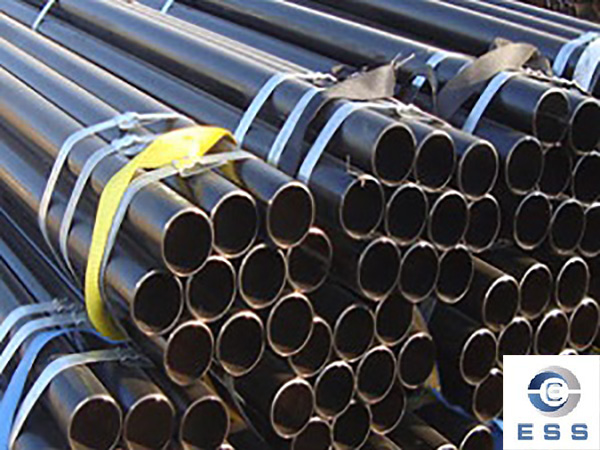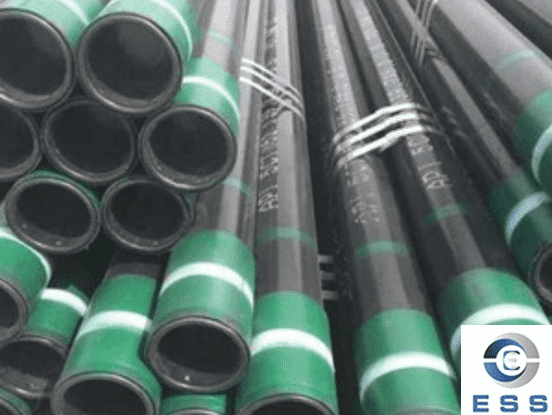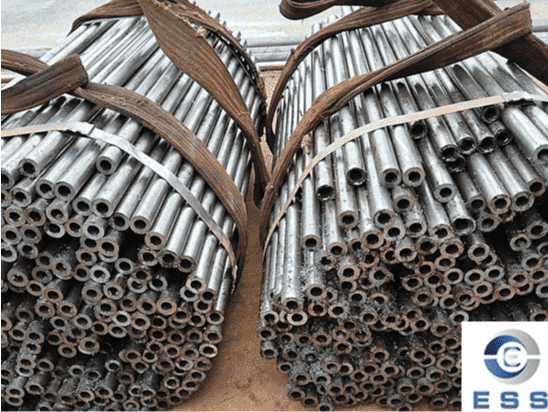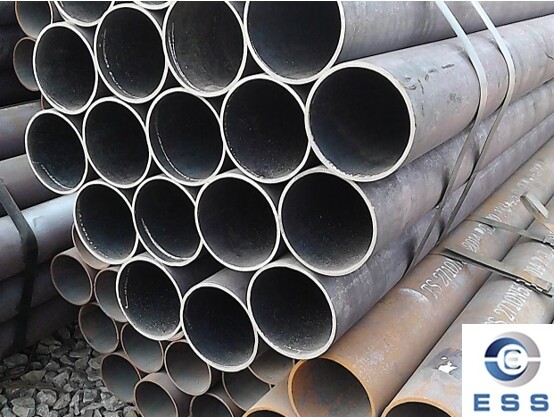Seamless steel pipe for natural gas refers to the pipeline that transports natural gas (including associated gas produced in oil fields) from mining sites or processing plants to urban gas distribution centers or industrial enterprise users, also known as gas transmission pipelines. The use of natural gas pipelines to transport natural gas is a way to transport large quantities of natural gas on land. Natural gas pipelines account for about half of the world's total pipeline length.
Shipping Advantages
Natural gas pipeline transportation has the advantages of low transportation cost, small land occupation, fast construction, large oil and gas transportation volume, high safety performance, less transportation loss, no "three wastes" discharge, low risk of leakage, small environmental pollution, and little impact on bad weather. The equipment maintenance is small, easy to manage, and easy to realize remote centralized monitoring and other advantages.
Use classification
Gas transmission pipelines can be divided into three types according to their purposes: gas collection pipelines, gas transmission pipelines, and gas distribution pipelines.
①Gas-gathering pipeline: the pipeline from the gas field wellhead device through the gas-gathering station to the gas treatment plant or the starting compressor station, mainly used to collect untreated natural gas extracted from the formation. Due to the high pressure of the gas well, the pressure of the general gas-gathering pipeline is about 100 kgf/cm2 or more, and the pipe diameter is 50-150 mm.
②Gas transmission pipeline: the pipeline from the gas treatment plant or starting point compressor station of the gas source to the gas distribution center, large-scale users or gas storage depots in major cities, and the pipelines connected with each other between the gas sources. Natural gas with standard quality (see pipeline gas transmission process) is the main part of the entire gas transmission system. The diameter of the gas transmission pipeline is larger than that of the gas collection pipeline and the gas distribution pipeline, and the maximum diameter of the gas transmission pipeline is 1420 mm. Natural gas is transported under pressure at the starting point compressor station and the compressor stations along the route. The gas transmission pressure is 70-80 kgf/cm2, and the total length of the pipeline can reach thousands of kilometers.
③Gas distribution pipeline: The pipeline from the urban pressure regulating metering station to the user's branch line has low pressure, many branches, dense pipeline network, and small pipe diameter. In addition to using a large number of steel pipes, low-pressure gas distribution pipelines can also be made of plastic pipes or other materials. .

Pipeline structure
Gas pipelines are assembled by connecting individual pipes one by one. Modern gas gathering pipelines and gas transmission pipelines are made of steel pipes connected by electric welding. There are many kinds of steel pipes, such as seamless pipe, spiral seam pipe and straight seam pipe. The seamless pipe is suitable for pipes with a diameter of less than 529 mm, and the spiral seam pipe and straight seam pipe are suitable for large diameter pipes. The cross-sectional structure of the pipeline of the gathering and transportation pipeline is complicated as inner coating-steel pipe-outer insulating layer-insulation (cold insulation) layer; the simple one is only steel pipe and outer insulation layer, while the inner wall coating and insulation (cold insulation) layer are all depending on The gas transmission process should be confirmed again.
Pipe material
X-60 low-alloy steel (strength limit: 42 kgf/cm2) is widely used for pipes, and higher-strength materials such as X-65 and X-70 have begun to be used. In order to reduce the frictional resistance in the pipeline, new steel pipes over 426 mm have generally adopted inner coatings.
Sequential transportation of gases with different physical properties in the same pipeline, as well as pipeline transportation tests of gaseous and liquid natural gas at a low temperature of -70°C and a high pressure of 77 kgf/cm2. The natural gas pipeline transmission system consists of two parts: pipeline gas transmission station and line system. The line system includes pipelines, valve rooms along the line, crossing buildings (see pipeline crossing project and pipeline crossing project), cathodic protection station (see pipeline anticorrosion), pipeline communication system, dispatching and automatic monitoring system (see pipeline monitoring), etc.
Steel pipe is the main material of pipeline. Natural gas transmission steel pipe is a relatively special metallurgical product formed by deep processing of plate (strip). The microstructure of pipe steel, due to the difference in process technology, there are certain differences in the pipe steel produced by various manufacturers. In the 1960s, X52 steel grade was generally used, in the 1970s, X60 and X65 steel grades were used, and in the 1980s and 1990s, X70 steel was mainly used. Gas pipelines in some foreign countries have begun to use X80 steel. With the continuous development of pipeline steel research, Canada and other countries have laid test sections of X100 and X120 pipeline steel. For the first time, X80-grade pipeline steel was used in the 7.71-kilometer test section in the pipeline project of the Jining-Ningbo connecting line in my country. The 4,843km-long Second West-to-East Gas Pipeline pipeline is all made of X80 grade pipe steel with a diameter of 1,219mm, increasing the gas transmission pressure to 12Mpa. Generally speaking, X80 steel has a dual-phase structure of ferrite and bainite, X100 pipe steel has a bainite structure, and X120 pipe steel has an ultra-low carbon bainite and martensite structure. For pipes for natural gas pipelines, strength, toughness and weldability are the three most basic quality control indicators.
Pipeline Features
1) The gas pipeline system is a continuous closed delivery system.
2) From transportation, storage to user use, natural gas is under pressure.
3) Due to the small specific gravity of the natural gas being transported, the influence of the static pressure head is much smaller than that of liquid. When the design height difference is less than 200 meters, the static pressure head is negligible, and the line is almost not restricted by the vertical terrain.
4) There is no water hammer hazard in liquid pipelines.
5) When an accident occurs, it is very harmful and affects a wide range. Once the pipeline ruptures, it releases a large amount of energy and has a long tear length, and the discharged natural gas is likely to cause a fire if it encounters an open flame.













 Eastern Steel Manufacturing Co.,Ltd not only improve product production and sales services, but also provide additional value-added services. As long as you need, we can complete your specific needs together.
Eastern Steel Manufacturing Co.,Ltd not only improve product production and sales services, but also provide additional value-added services. As long as you need, we can complete your specific needs together.










